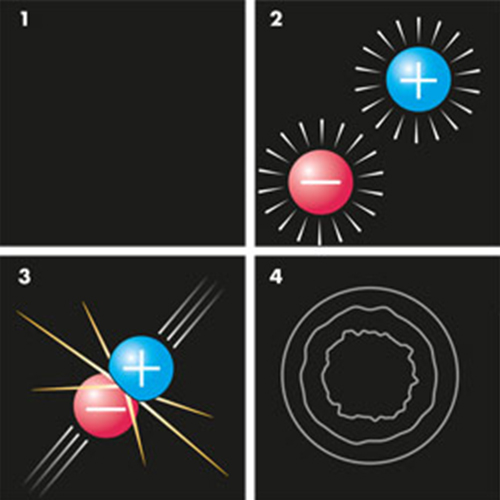
At the time, though, astronomers believed that the universe was static – that it was neither expanding nor contracting. To counteract this problem, Einstein added another term to his equations, called the cosmological constant, to balance the inward pull of gravity.
Once astronomer Edwin Hubble discovered that the universe is expanding, Einstein discarded the cosmological constant, calling it his greatest scientific blunder. Today, physicists explain the cosmological constant as the vacuum energy of space.
In essence, this says that pairs of particles are constantly popping into existence throughout the universe. These “virtual pairs” consist of one particle with a negative charge and one with a positive charge. They exist for only a tiny fraction of a second before they collide and annihilate each other in a tiny burst of energy. This energy may be pushing outward on space itself, causing the universe to accelerate faster.
One of the appealing elements of vacuum energy is that it could explain why the acceleration has only started fairly recently on the cosmic timescale.
Now – 13.7 billion years after the Big Bang – the universe has grown much larger, so the galaxies are not packed so close together. Their gravitational pull on each other is weakened, allowing the vacuum energy to play a more dominant role.
Vacuum energy has its own set of problems, though. It should be far too weak to account for the acceleration seen in the present-day universe, for example — by a factor of at least 1057 (a one followed by 57 zeroes), and perhaps as much as 10120 (a one followed by 120 zeroes). Yet it is the most complete scenario to date, so it leads the pack of dark-energy contenders.
